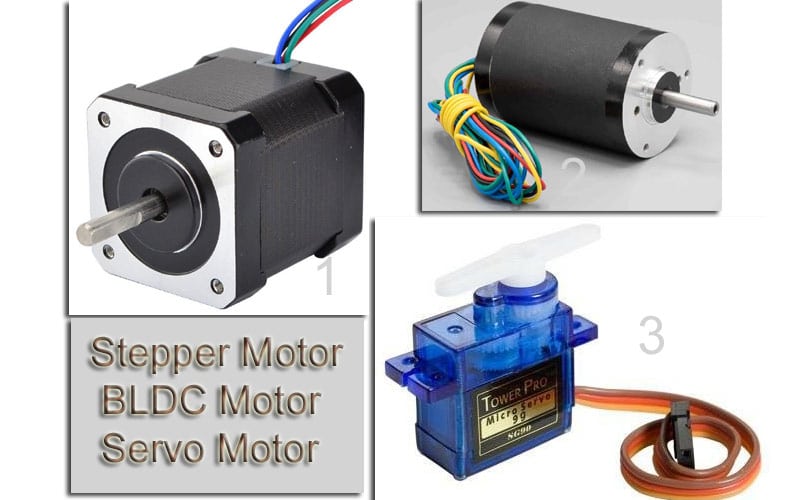Not sure which motor is right for you? Keep reading—we’ll compare them, and help you find the perfect match for your project!
When it comes to choosing the right motor for your project, have you ever stopped to think about how much this decision impacts the system’s performance? Whether it’s speed, torque, precision, or even cost, the motor you pick can make or break your design.
Let’s dive into three popular options—Stepper motors, Brushless DC (BLDC) motors, and Servo motors. Each of these has its own set of strengths and weaknesses, and knowing how they differ can save you a lot of time (and headaches) later on.

Comparison Between Stepper Motor, BLDC Motor, and Servo Motor
| Feature | Stepper Motor | BLDC Motor | Servo Motor |
| Control System | Operates on an open-loop system, responding to pulse signals without feedback. Prone to step loss under heavy loads. | Functions with a closed-loop system, using sensors to monitor speed and position for precise control. | Employs a closed-loop system, continuously adjusting position and speed with feedback for high precision. |
| Speed and Torque | High torque at low speeds.Torque drops significantly at high speeds.Typical speed range: 600–1500 RPM. | Consistent torque across a wide speed range.Suitable for high-speed applications (thousands to tens of thousands RPM). | Delivers high torque across a broad speed range.Excellent for dynamic tasks needing rapid speed changes. |
| Precision and Accuracy | Moves in discrete steps for high precision.Accuracy may suffer under heavy loads or dynamic conditions. | Good precision and stability due to closed-loop design.Better suited for speed control than precise positioning. | Highest precision due to the feedback system.Achieves exact positioning with minimal error under varying loads. |
| Response Time | Slower response due to step-by-step motion.Unsuitable for rapid acceleration or deceleration tasks. | Faster response than stepper motors, optimized for speed and torque control. | Quick response and excellent dynamic performance.Suitable for fast changes in speed or position. |
| Holding Torque | Naturally provides high holding torque without requiring continuous power.Suited for static positioning tasks. | Requires active control to maintain position.Less suitable for static holding tasks. | Can maintain position but requires continuous power and feedback.Less efficient for static tasks. |
| Noise and Vibration | Generates more noise and vibration, especially at low speeds. | Operates quietly with minimal vibration. | Quieter than stepper motors but may produce noise during rapid acceleration or deceleration. |
| Lifespan and Maintenance | Long lifespan determined by bearing wear.Requires minimal maintenance. | Longer lifespan than stepper motors due to brushless design.Minimal maintenance required. | Similar lifespan to BLDC motors.May require more maintenance due to complex feedback systems. |
| Cost and Availability | Affordable and widely available with standard sizes and configurations. | More expensive than stepper motors, often customized for specific applications. | Most expensive option due to feedback systems and controllers. |
| Applications | Low-speed, high-precision tasks such as 3D printing, CNC machines, and automated feeders. | High-speed applications requiring efficiency and reliability, such as drones, HVAC systems, and electric vehicles. | Dynamic, high-performance tasks like robotics, conveyors, and industrial automation. |
Which Motor Should You Choose When?
- For simple, cost-effective, and precise applications (e.g. 3D printers), choose Stepper Motors.
- For efficient, high-speed operations with minimal maintenance, opt for BLDC Motors.
- For complex, high-performance tasks requiring speed, precision, and adaptability, go for Servo Motors.
Also Check: Selecting The Right Motor for Your Design
Each motor type has strengths tailored to specific applications, and understanding these differences ensures optimal performance and cost efficiency for your project.






